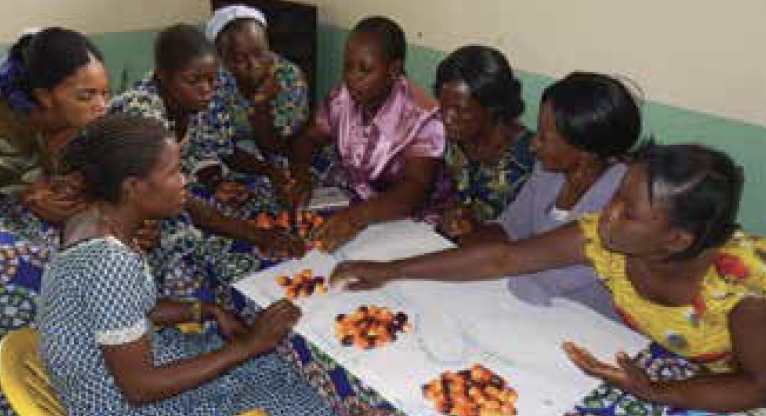Current vulnerability in the Tri-National de la Sangha Landscape

Working Paper
Summary
The study of the current vulnerability of villages in the Tri-National de la Sangha Landscape, Cameroon, creates the basis to evaluate future vulnerability and identify possible adaptation strategies that could be synergistic with mitigation efforts in the Congo region. In the assessment, important social, ecological and economic processes were explored using a participatory approach; different dimensions of vulnerability were applied as the lenses for analysis. The following are key insights gained through this assessment.
Vulnerability is dynamic in nature. The assessment shows important social, ecological and economic changes over the past decades, which have shaped the vulnerability of villages in the project site. Four decades ago, villages had small production fields and were surrounded by forests with abundant resources. Villagers state that, over time, competition for productive land and forest resources has degraded forests around the villages and increased the fragility of local livelihoods; as resources become scarcer, the population keeps growing and uncertainty about rainfall patterns increases. Villagers recognise a number of threats that can affect their livelihoods. Climate-related disturbances combine with a myriad of other threats and current conditions to shape the vulnerability of villages in the study sites. Among the main climate-related disturbances, villagers mentioned intense drought, changing seasons and strong winds.
Vulnerability is different for different groups. Based on the analysis, different groups, natural resources and activities are affected differently by different climatic disturbances. Children and the elderly seem to be the most vulnerable social groups in the villages. Agriculture is the most exposed and affected activity by adverse climate-related disturbances such as drought and changing seasons. Some forest resources are also vulnerable but to a lesser extent; in some cases non-timber forest products (NTFPs) have benefited from changes in weather patterns.
Villages as a whole are highly vulnerable to a changing climate. Most of the households in the villages depend on agriculture for their subsistence and economic development. Shifts in the seasons and increased unpredictability of rainfall patterns have led to adverse impacts on agricultural production, and hence food security and the local economy. Increasing agricultural land to compensate for losses has put more pressure on other natural resources on which the villages depend. Villagers recognise the uncertainty in their ability to predict wet and dry periods and to follow the ‘traditional’ production calendar for their activities. Increased climate variability and uncertainty seem to be one of the main disturbances shaping current vulnerability in the villages.
Livelihood diversification is a current strength. Villages depend on several activities for their subsistence and economic base. Most of these activities relate to the management or extraction of natural resources through agriculture, collection of NTFPs, logging and mining. Although villagers produce mainly for self-consumption, products such as cacao, manioc and plantain and, to a lesser extent, bushmeat are important sources of household income. Villages are generally well connected to markets where groups of households sell their products jointly. Agriculture is the main base of their economy. NTFPs play a less important role for the local economy, mainly because their commerce is not well organised yet. Instead, NTFPs seem to be important safety nets in periods of scarcity and stress.
Social capital is weak but needed. In most villages, collective action to maintain social infrastructure is weak, denoting poor management for the common good of the village as a whole. In contrast, collective action is present when specific household groups combine efforts to improve their agricultural practices and trade. External interventions from elites or NGOs differ in the villages; villages closer to Yokadouma seem to have received more external support than distant villages. Private investment from companies settling in the area can play an important role for labour creation when locals are hired instead of migrants; however, they do not necessarily contribute to the welfare of the villages as a whole.
Most of the insights gained through this vulnerability assessment will be combined with more in-depth research to explore future vulnerability and identify synergies between mitigation and adaptation in the sites. Results from further analysis will generate recommendations to inform decision-making and planning at the local and national levels across the Congo Basin countries.
*This weADAPT article is an abridged version of the original text, which can be downloaded from the right-hand column. Please access the original text for research purposes, full references, or to quote text.
Citation
Devisscher, T., Bharwani, S., Tiani, A.M., Pavageau, C., Kwack, N.E. and Taylor, R. 2013 Current vulnerability in the Tri‑National de la Sangha landscape, Cameroon. Working Paper 107. CIFOR, Bogor, Indonesia
(0) Comments
There is no content